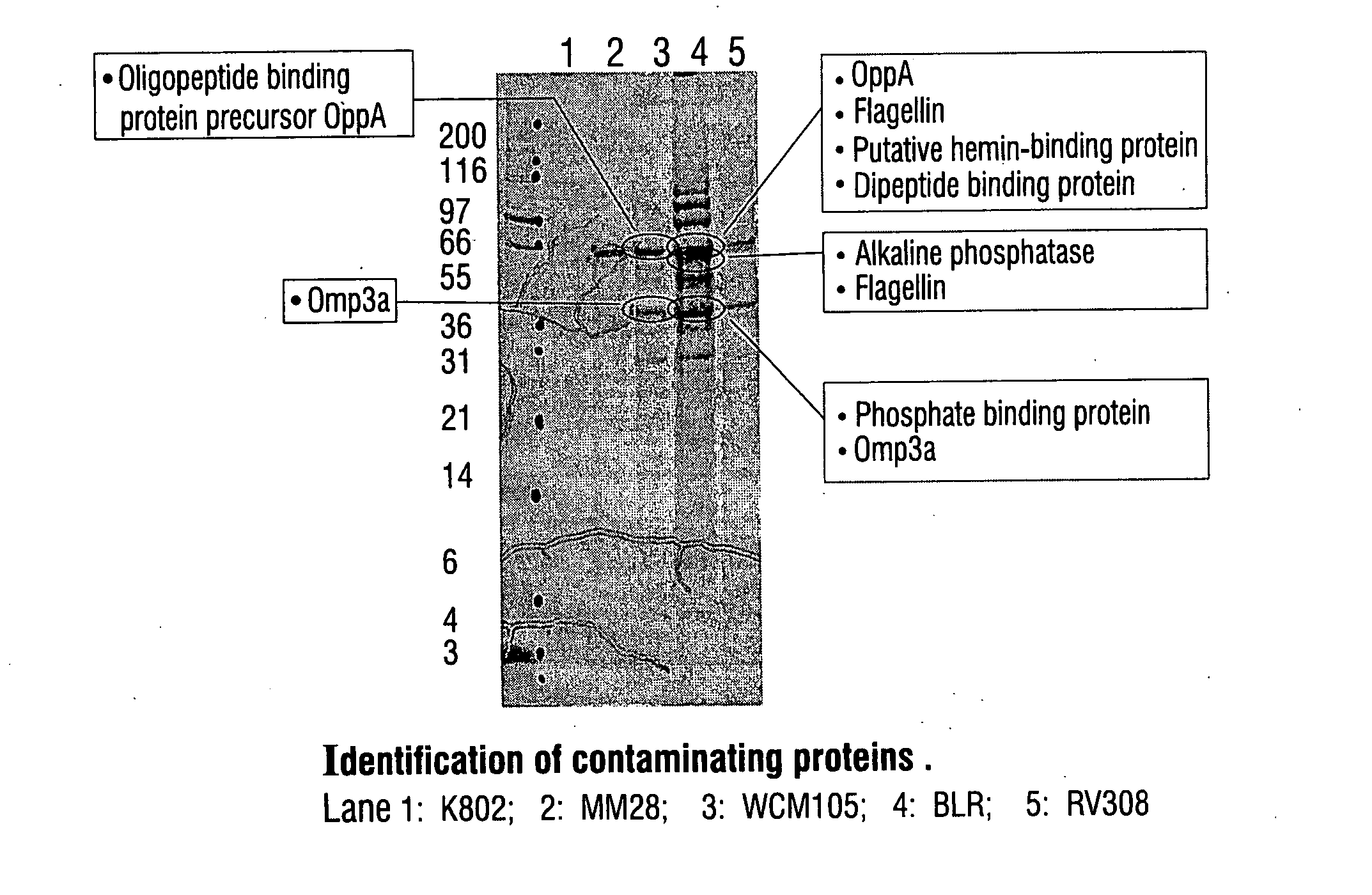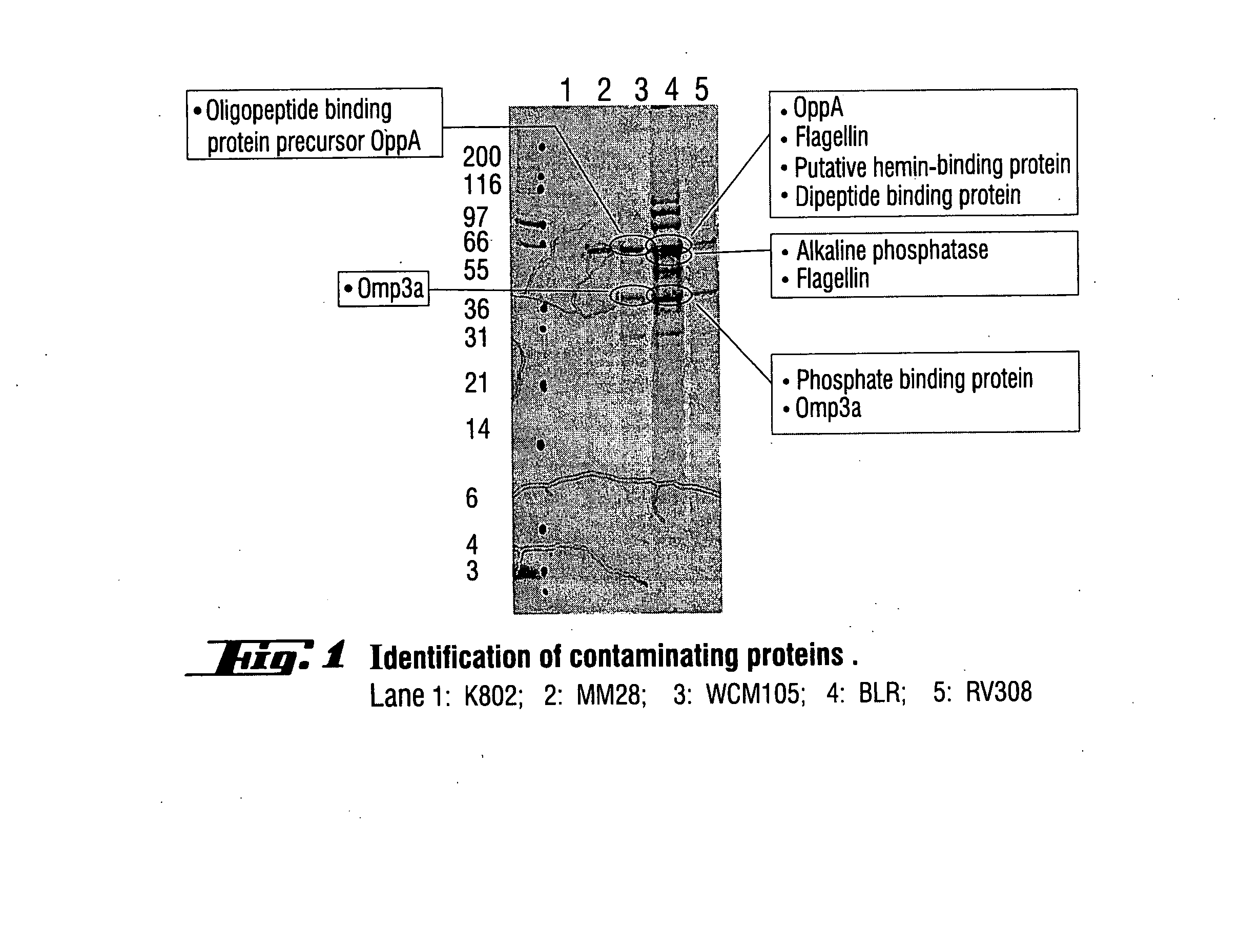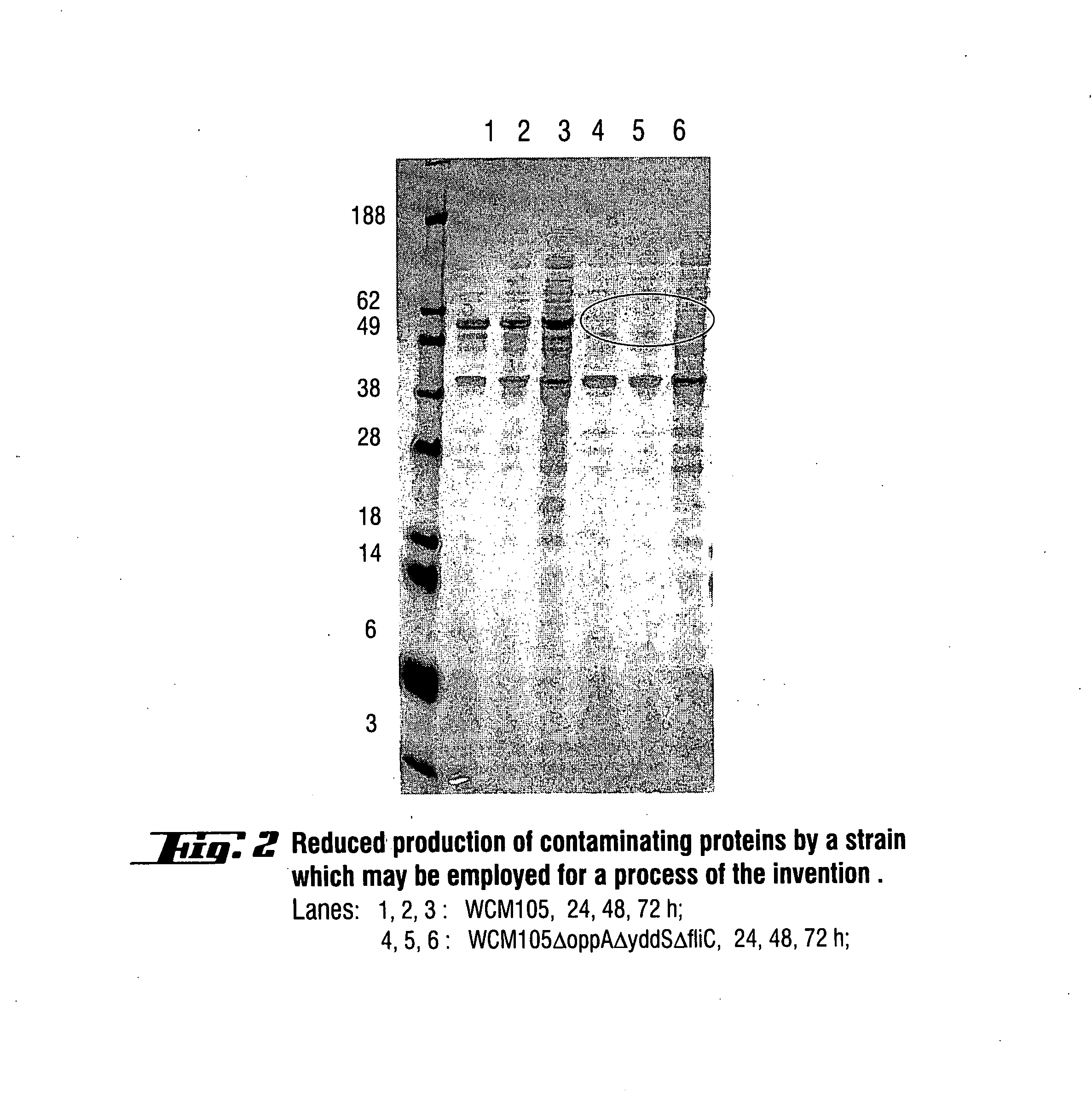Microorganism strain for producing recombinant proteins
a technology of recombinant proteins and microorganisms, which is applied in the field of microorganism strains for producing recombinant proteins, can solve the problems of reduced protein secretion, complex preparation and cost of desired proteins, and reduced production efficiency of proteins to be produced, so as to facilitate the production of recombinant proteins
- Summary
- Abstract
- Description
- Claims
- Application Information
AI Technical Summary
Benefits of technology
Problems solved by technology
Method used
Image
Examples
example 1
Identification of Contaminating Host Proteins
[0076] The following E. coli secretion strains which are known from the literature, generally accessible and commercially available are cultured in Luria-Bertani medium (“LB medium”) in 100 ml Erlenmeyer flasks at 30° C. for 48 h: [0077] BLR: Ray et al. 2002, available via Novagen [0078] K802=CGSC* #5610: Yang et al., 1998 [0079] WCM105: preparable according to EP0338410B1 [0080] MM28=CGSC* #5892: Nagahari et al. 1985 [0081] RV308=ATCC** 31608; EP0677109B1 [0082] RR1: ATCC** 31434: Nagahari et al., 1985 [0083] KG1005 ompT: Wadensten et al., 1991 [0084] * available via the E. coli Genetic Stock Center CGSC (830 Kline Biology Tower, MCD Biology Department, 266 Whitney Ave., PO box 208103, Yale University, New Haven, Conn. 06520-8193), [0085] ** available via: LGC Promochem, Mercatorstr. 51, 46485 Wesel, Germany
[0086] The cells are subsequently removed by centrifugation at 13 000 g for 10 min. In each case 30 μl of supernatant (medium) are...
example 2
Deletion of Genes of Contaminating Host Proteins
[0094] A large internal region of the respective genes in the respective strains is deleted using the λ-Red recombinase system by Datsenko and Wanner (2000, PNAS, 97 (12), pp. 6640-6645). For this purpose, the gene region to be removed is first replaced with a chloramphenicol resistance cassette which is then eliminated again by using yeast FLP recombinase and special “FRT” flanks on the cassette.
The deletion is carried out as follows:
PCR:
[0095] Template: [0096] The template used is pKD3 (chloramphenicol resistance; available via the E. coli Genetic Stock Center CGSC as CGSC #7631). [0097] Oligos:
[0098] Forward Oligo: 36-50 bp of homologous sequence from the start of the gene to be removed +20 bp of homologous plasmid sequence:
(SEQ. ID NO 1)5′- 36-50 bp chrom. -GTG TAG GCT GGA GCT GCT TC -3′
[0099] Reverse Oligo: 36-50 bp of homologous sequence from the end of the gene to be removed +20 bp of plasmid sequence (counterstrand): ...
example 3
Generation of Multiple Deletion Mutants
[0188] The generation of multiple mutants comprised deleting step-by-step according to the procedure described in example 2 also the other 6 identified genes in some of the strains generated in example 2.
The following strains are produced inter alia:
[0189] K802•oppA•fliC [0190] BLRΔphoAΔoppA [0191] BLRΔphoAΔoppAΔyddSΔphoAΔphoS [0192] BLRΔphoAΔyddS [0193] BLRΔphoAΔoppAΔyddSΔfliC [0194] WCM105ΔoppAΔompA [0195] WCM105ΔompAΔfliC [0196] WCM105ΔoppAΔphoA [0197] WCM105ΔoppAΔyddS [0198] WCM105ΔfliCΔyddS [0199] WCM105ΔoppAΔfliC [0200] WCM105ΔoppAΔfliCΔyddS [0201] WCM105ΔoppAΔfliCΔyddSΔphoA
PUM
| Property | Measurement | Unit |
|---|---|---|
| temperature | aaaaa | aaaaa |
| temperature | aaaaa | aaaaa |
| temperature | aaaaa | aaaaa |
Abstract
Description
Claims
Application Information
 Login to View More
Login to View More - R&D
- Intellectual Property
- Life Sciences
- Materials
- Tech Scout
- Unparalleled Data Quality
- Higher Quality Content
- 60% Fewer Hallucinations
Browse by: Latest US Patents, China's latest patents, Technical Efficacy Thesaurus, Application Domain, Technology Topic, Popular Technical Reports.
© 2025 PatSnap. All rights reserved.Legal|Privacy policy|Modern Slavery Act Transparency Statement|Sitemap|About US| Contact US: help@patsnap.com



